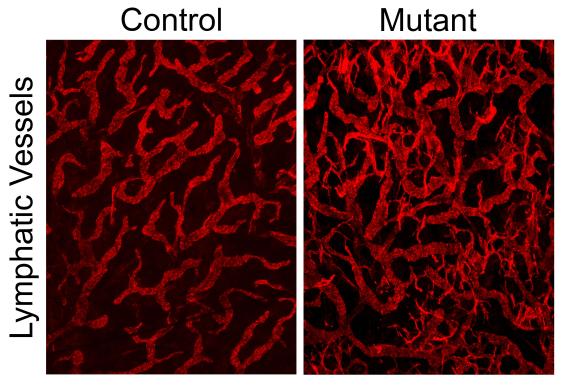Lymphatic vessels are an integral part of the lymphatic system and serve a critical role in maintaining tissue fluid homeostasis, trafficking immune cells, and absorbing dietary fats. Complex lymphatic anomalies (CLAs) are sporadically occurring life-threatening diseases caused by the abnormal development of lymphatic vessels. We and others recently discovered that CLAs are caused by oncogenic mutations in lymphatic vessels (e.g., KRAS, NRAS, PIK3CA, BRAF, and MAP2K1). The Dellinger laboratory uses in vitro and in vivo models of CLAs to identify new treatments for patients and the mechanisms by which genetic mutations impair the development of lymphatic vessels.
 The Dellinger Laboratory studies the development of the lymphatic vasculature and diseases caused by errors in the development of lymphatic vessels.
The Dellinger Laboratory studies the development of the lymphatic vasculature and diseases caused by errors in the development of lymphatic vessels. Techniques used by the lab:
- Tissue-clearing and 3D imaging
- Single-cell RNA-Sequencing
- Tissue Culture
- Immunofluorescence Staining
Contact Us
Michael Dellinger, Ph.D.
Associate Professor
Phone: 214-648-4907
Email
Department of Surgery
UT Southwestern Medical Center
5323 Harry Hines Blvd.
Dallas, TX 75390-9159